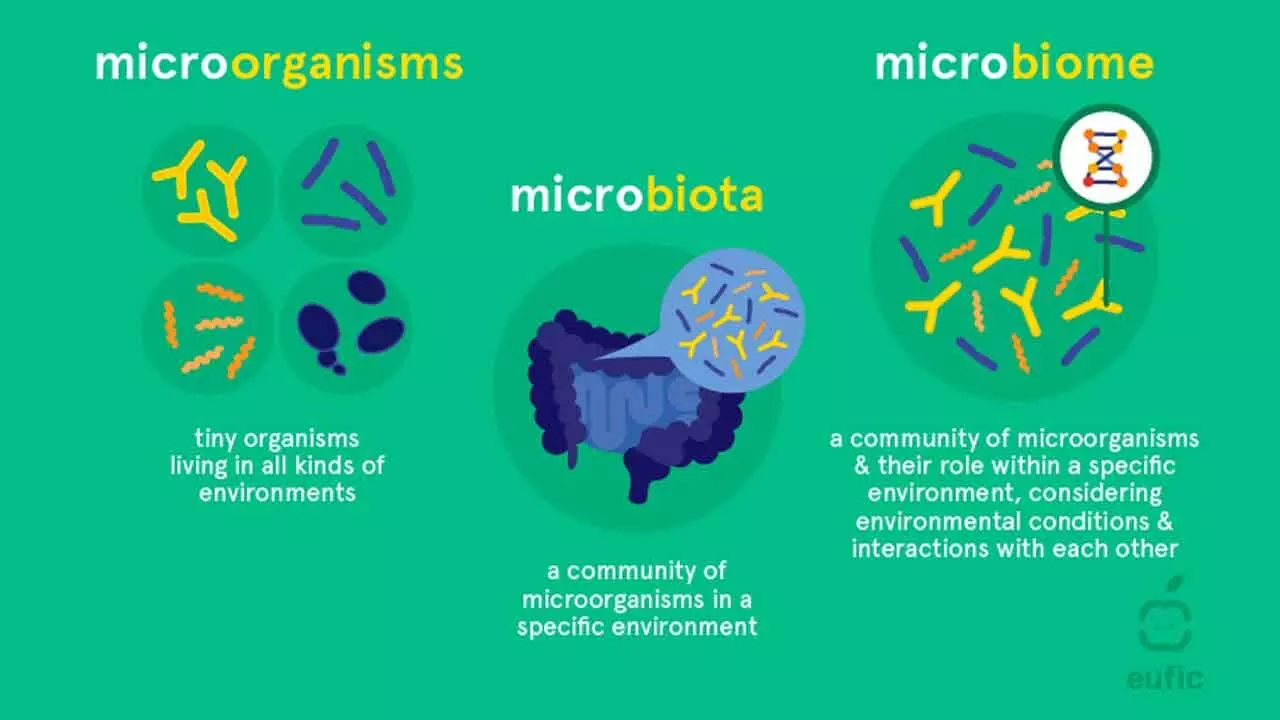Mathematical Frameworks Can Advance Our Understanding Of Ecosystems From Microbiomes To Large Ones Involving Plants And Animals
Microbiomes are collections of thousands of microbes that inhabit different environments and organisms
Mathematical Frameworks Can Advance Our Understanding Of Ecosystems From Microbiomes To Large Ones Involving Plants And Animals

Math is essential to our understanding of the world around us, whether we're talking about quantum mechanics or the complexities of life itself. By applying mathematical models, we could make sense of the complex factors that shape microbiomes
Microbial communities – vast ecosystems teeming with millions of different cells from different species – play a fundamental role in life on Earth, from producing oxygen to aiding digestion.
Despite their importance, it has been a challenge for scientists to fully understand how these intricate communities form and function.
But in a new study, my colleagues and I have developed a new mathematical framework aimed at explaining how microbial relationships emerge. By better understanding these communities, we could protect and manage them. This will have profound implications for the health of our planet.
Most of our understanding of microbiomes – the collections of thousands of microbes that inhabit different environments and organisms – has come from studies on the differences between them. Researchers often investigate the ecological and evolutionary factors that appear to shape these microbial communities. But it has been hard to determine whether these factors are actually causing the differences or are merely coincidental. This is why understanding the true drivers behind microbiome formation are so important. It helps us see why these communities exist and how they function.
If, like me, you've ever marvelled at the plants and animals thriving in nature, you've seen ecological and evolutionary forces in action, as Charles Darwin did during the 19th century.
The same principles that govern these larger ecosystems also apply to the microbial world.
So, for our research, my colleagues and I took a leaf out of Darwin's book. We examined the ecological and evolutionary factors that could lead to the formation of such diverse microbiomes across many multicellular organisms. These included marine sponges, insects, humans and squid. What we found was striking. Despite the vast differences between species, the same basic rules apply to their microbiomes.
For example, the ability of microbes to move between environments and their rapid rate of evolution are important factors in determining where they live, whether in a plant's roots or an animal's gut.
There are, of course, exceptions. In giant and red pandas, for instance, diet plays a vital role in shaping gut microbes, while certain plants, like the small brassica Arabidopsis, control their root microbiomes through chemical defences.
Once we had identified these mechanisms, the challenge was to organise our insights into a coherent framework. This is similar to what Darwin did with his theory of evolution by natural selection. And this is where math came into play. Math is essential to our understanding of the world around us, whether we're talking about quantum mechanics or the complexities of life itself. By applying mathematical models, we could make sense of the complex factors that shape microbiomes.
A new model for microbial ecosystems:
Our framework helps explain puzzling observations, such as why some marine sponges are teeming with microbes while others harbour just a few. Our study is unique because it allows us, for the first time, to think about these intricate symbiotic relationships holistically.
It integrates both ecological and evolutionary ways of thinking. We hope our framework will form the basis of future studies investigating other microbial ecosystems. We're currently expanding our research into marine sponges by exploring how the exchange of metabolic products (like vitamins and amino acids) between microbes, affects their community structure.
The flexibility of our framework means it can be adapted to study different systems. It could help provide a deeper understanding of the interactions between microbes and their hosts. This type of quantitative approach is crucial as humans continue to affect our natural ecosystems. It could help us come up with solutions to those problems.
We recently demonstrated how microbiome studies can improve coral reef conservation efforts by examining the microbial networks that support coral settlement. By manipulating these networks, we could help to restore coral populations more effectively.
Of course, challenges remain. For example, we still don't understand microbial dormancy, which is a strategy some microbes adopt when under stress. They reduce their activity while at the same time increase their resistance to harsh external conditions. It is a bit like bears hibernating to avoid winter.
In spite of issues like those, we're optimistic that mathematical frameworks like ours will pave the way for future discoveries. It could advance our understanding of ecosystems both large and small – from microbiomes to large ecosystems involving plants and animals.
This in turn could help to unlock the secrets of the natural world. That knowledge could be used to preserve biodiversity for future generations.
(The writer is with
Swansea University)

